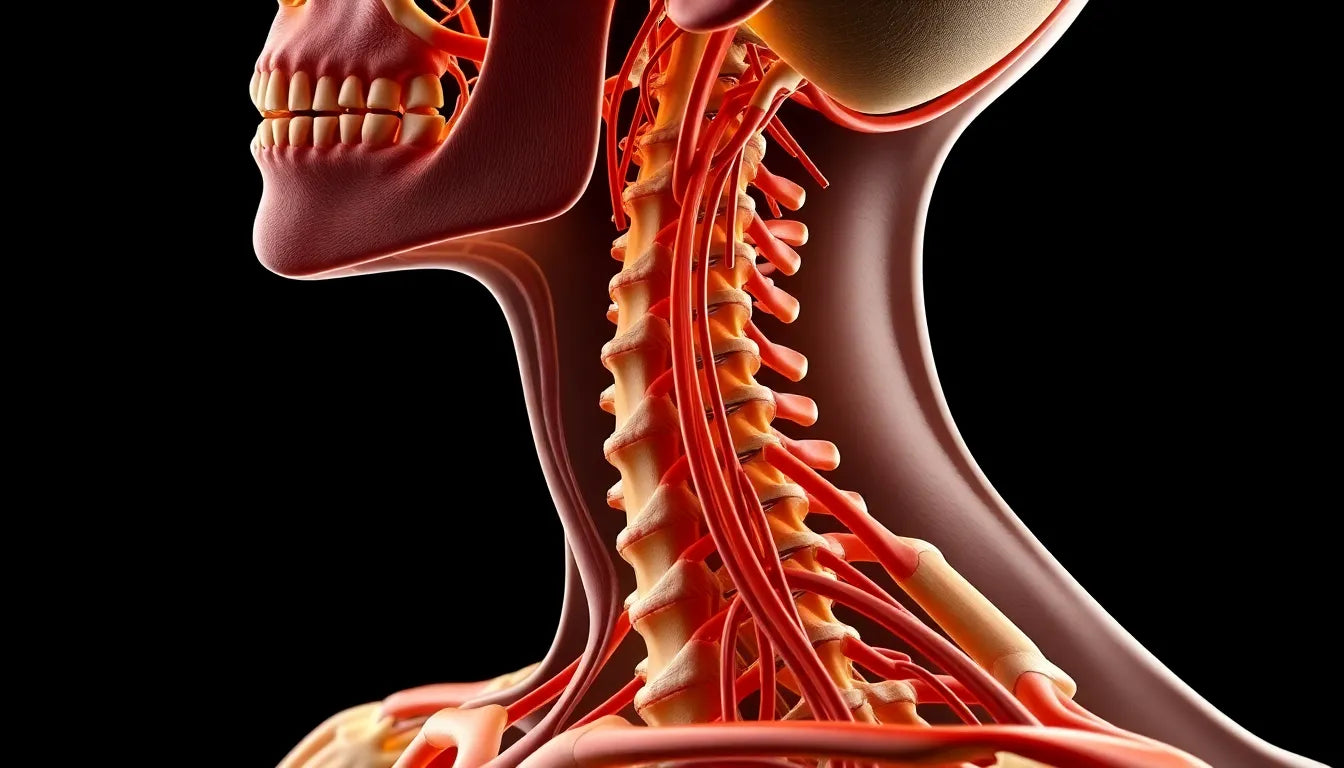Backbone pain, a common ailment affecting millions worldwide, can significantly disrupt daily life and overall well-being. It manifests as discomfort or pain along the spine, often resulting from various factors that can range from mechanical to lifestyle-related. Understanding the nuances of backbone pain is crucial for anyone seeking to alleviate its impact and regain a sense of comfort and mobility.
Understanding backbone pain and its impact
Backbone pain is not just a physical discomfort; it can also affect emotional and mental health. This pain can hinder daily activities, from simple tasks like bending and lifting to more complex movements required in sports or work environments. The prevalence of this condition among adults is notable, with many experiencing it at some point in their lives. Addressing the underlying causes of backbone pain is essential for finding effective relief and improving quality of life.
Common causes of backbone pain
The causes of backbone pain are diverse, often involving mechanical changes, inflammatory conditions, and other medical issues. Muscle strains, osteoarthritis, and structural issues like herniated discs are frequent culprits. In addition to these medical causes, lifestyle factors play a significant role. Poor posture, lack of exercise, and stress related to work can exacerbate or even trigger backbone pain. For instance, sitting for prolonged periods without proper back support can lead to discomfort and strain on the spine.

Women's Posture Shirt™ - Black
Improves posture, stimulates muscles, and relieves pain during daily activities.
The purpose of this post
This blog post aims to guide you through the complexities of managing and alleviating backbone pain. By exploring comprehensive solutions and practical strategies, we hope to provide a path toward comfort and improved spinal health. Whether you're dealing with acute discomfort or chronic issues, understanding the root causes and employing effective management techniques can make a significant difference. Stay tuned as we delve deeper into the various aspects of backbone pain, its causes, and the strategies you can adopt to find relief.
Causes and types of backbone pain
Understanding the intricate causes of backbone pain is essential for effective management and relief. Mechanical changes and structural issues are among the primary culprits. Conditions such as sprains, strains, and various spinal disorders often lead to significant discomfort. For instance, a sprain involves the overstretching or tearing of ligaments, while strains refer to damage to muscles or tendons. Spinal disorders, such as herniated discs, can exert pressure on nerves, leading to pain and mobility issues.
Specific diseases and conditions also contribute to backbone pain. Spondylosis, a degenerative condition affecting the spine, and sciatica, which involves pain radiating along the sciatic nerve, are notable examples. These conditions can cause persistent pain and require targeted treatment approaches for effective management.
Backbone pain can be classified into three primary types: acute, subacute, and chronic. Acute pain is sudden and typically lasts a few days to weeks, often resulting from an injury or strain. Subacute pain persists longer, ranging from six weeks to three months, and may require more intensive treatment. Chronic pain lasts beyond three months and can significantly affect quality of life, necessitating comprehensive management strategies. The duration and intensity of pain play a crucial role in determining the appropriate treatment approach.
Risk factors and lifestyle influences
Several risk factors can increase the likelihood of experiencing backbone pain. Age is a significant factor, as the spine naturally degenerates over time, leading to conditions like osteoarthritis. A sedentary lifestyle, characterized by prolonged sitting and lack of physical activity, can weaken the muscles supporting the spine, increasing susceptibility to pain. Occupational hazards, such as jobs involving heavy lifting or repetitive motions, also contribute to the risk.
Lifestyle influences, including poor physical fitness and job-related stress, can exacerbate backbone pain. Smoking is another detrimental factor, as it reduces blood flow to the spine and accelerates degenerative changes. Poor posture, whether from slouching at a desk or improper lifting techniques, can strain the spine and lead to discomfort. Preventive measures, such as maintaining spinal flexibility and strength through regular exercise, are crucial for reducing the risk of backbone pain.
Treatment and management strategies
Effective management of backbone pain often involves a combination of medical and therapeutic approaches. Physical therapy is a cornerstone of treatment, focusing on exercises that improve strength and flexibility. Medications, such as nonsteroidal anti-inflammatory drugs (NSAIDs), can provide temporary relief from pain and inflammation. In severe cases, surgical intervention may be necessary to address structural issues.
Alternative therapies, including chiropractic care and acupuncture, offer additional options for pain relief. Chiropractic adjustments aim to improve spinal alignment and reduce nerve irritation, while acupuncture stimulates specific points to promote healing and alleviate pain.
Ergonomic solutions play a vital role in alleviating backbone pain by promoting proper posture and reducing strain on the spine during daily activities. Ergonomic chairs, desks, and accessories can help maintain spinal alignment and prevent discomfort. By incorporating these solutions into everyday life, individuals can reduce the risk of pain and enhance overall spinal health.

Lumbar support belt
Adjustable lower back belt for stabilisation, relief, and support during activity or rest.
In conclusion, understanding the detailed causes, risk factors, and treatment strategies for backbone pain is essential for finding effective relief. By addressing both medical and lifestyle factors, individuals can embark on a path toward comfort and improved quality of life. Stay tuned for the next part of this blog post, where we will explore preventive measures and lifestyle adjustments that can further aid in managing backbone pain.
Preventive measures and lifestyle adjustments
Preventing backbone pain involves proactive measures that focus on maintaining a healthy spine through regular exercise and lifestyle adjustments. Engaging in consistent physical activity is crucial for strengthening the muscles that support the spine, thereby reducing the risk of pain. Exercises such as yoga and pilates are particularly beneficial as they enhance core strength, improve flexibility, and promote overall spinal health. These activities not only help in preventing pain but also aid in managing existing discomfort.
Adopting healthy habits is another essential aspect of preventing backbone pain. Maintaining a healthy weight can significantly reduce the strain on the spine, as excess weight can exacerbate pain and lead to further complications. Quitting smoking is also vital, as smoking can impede blood flow to the spine and accelerate degenerative changes. By making these lifestyle changes, individuals can decrease their risk of developing backbone pain and improve their overall well-being.
Creating an ergonomic workspace is a practical step in preventing backbone pain, especially for those who spend long hours sitting. Ergonomic chairs and desks are designed to support proper posture and reduce strain on the spine. Additionally, practicing proper lifting techniques is crucial to avoid injury. When lifting heavy objects, it is important to bend at the knees and keep the object close to the body to minimize stress on the back.
Frequently asked questions
What are the most common causes of backbone pain?
Mechanical changes, inflammatory conditions, and lifestyle factors such as poor posture and lack of exercise are the most common causes of backbone pain.
How can ergonomic products help alleviate backbone pain?
Ergonomic products promote proper posture and reduce strain on the spine, providing relief from pain by supporting spinal alignment during daily activities.
What exercises are recommended for preventing backbone pain?
Exercises that strengthen the core, improve flexibility, and maintain spinal health, such as yoga and pilates, are recommended for preventing backbone pain.
When should I see a doctor for backbone pain?
If pain persists for more than a few weeks, is severe, or is accompanied by other symptoms like numbness or weakness, it is advisable to consult a healthcare professional.
Can lifestyle changes really make a difference in managing backbone pain?
Yes, adopting healthy habits such as regular exercise, ergonomic adjustments, and quitting smoking can significantly reduce the risk and severity of backbone pain.
In conclusion, understanding and implementing preventive measures and lifestyle adjustments are key to managing backbone pain effectively. By incorporating regular exercise, maintaining healthy habits, and utilizing ergonomic solutions, individuals can significantly reduce their risk of pain and improve their quality of life. Taking these steps not only helps in alleviating existing discomfort but also plays a crucial role in preventing future occurrences of backbone pain.
Kilder
- UT Southwestern Medical Center. ”5 Signs Your Back Pain Might Be an Emergency.”
- American Association of Neurological Surgeons. ”Low Back Pain.”
- World Health Organization. ”Low Back Pain.”
- Urits, I., et al. (2019). ”Low Back Pain: A Review of Epidemiology, Diagnosis, and Treatment.” National Center for Biotechnology Information.
- Mayo Clinic. ”Back Pain - Symptoms and Causes.”
- Stanford Medicine. ”Low Back Pain.”
- Cleveland Clinic. ”Back Pain: Symptoms, Causes, and Treatment.”
- Casazza, B. A. (2012). ”Diagnosis and Treatment of Acute Low Back Pain.” American Family Physician.
- Mayo Clinic. ”Back Pain - Diseases and Conditions.”
- American Dental Association. ”Symptoms and Causes of Back Pain.”
- MedlinePlus. ”Back Pain.”
- Cleveland Clinic. ”Lower Back Pain: Causes and Treatment.”


















